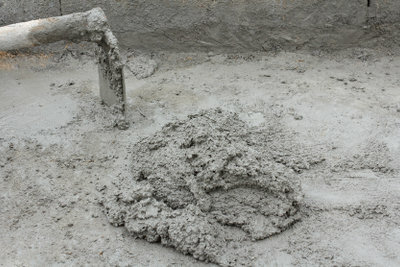Screed: drying time for underfloor heating
A good floor should always be balanced. This is quite easy to do with screed. You can also use heating elements. Then you can count on a comfortably warm floor after the dry season thanks to your underfloor heating.

What you need:
- Insulating and separating layer
- Heating elements
- Screed
- fan
The screed must be properly mixed
You should give your screed the appropriate time to dry after it has been applied. You can optimize this drying time while serving. So can your Underfloor heating also rather use.
- Do not set up your screed too damp. This moisture must eventually evaporate, which takes a certain amount of time.
- This more compact substance also creates fewer air pores. Your screed is therefore much stronger and more stable.
- The average value given for the drying time is 6 - 8 weeks. This of course varies depending on the climate, room and condition of the screed.
Note the drying time for underfloor heating
There are a few special cases when laying screed. These also affect the drying time of the material. And especially with underfloor heating, you should therefore pay attention to the following.
Most builders want construction to progress quickly. The waiting time until ...
- The drying time clearly depends on the screed. Cement, synthetic resin or magnesite screeds require different drying times.
- In addition to mixing, you should pay attention to the right heat. Do not heat to full capacity, but keep adding heat.
- Otherwise let the mixing water evaporate. This is necessary for binding the screed. Otherwise you will end up with crumbly mortar and, in the worst case scenario, cracks in your floor.
- In the beginning, this warmth should not come from your underfloor heating. After about three weeks you should start warming the underfloor heating. Take this from your heating log.
- Set your flow temperature to 25 degrees Celsius for the next three days. A large part of the floor will then be dried out.
- Then set your controller to the maximum setting of your heating. Now you will drive the last remaining moisture out of your soil.
- Then lower the temperature back in set steps. Only after this procedure is the screed dry.
- Do not give your screed a boost with accelerators. The craft cannot otherwise guarantee the product.
- Also make sure there is good ventilation. A fan will help you here.
- In addition, at least 5 degrees Celsius should be permanent.
- Before further processing your floor, note the residual moisture of 2 to 3%. Specialists can find this out with a special measurement.
In its dry season, the screed will now form a harmonious construct with your underfloor heating. And after hardening, you can use the floor with Tiles or make a floor covering more homely.
How helpful do you find this article?



